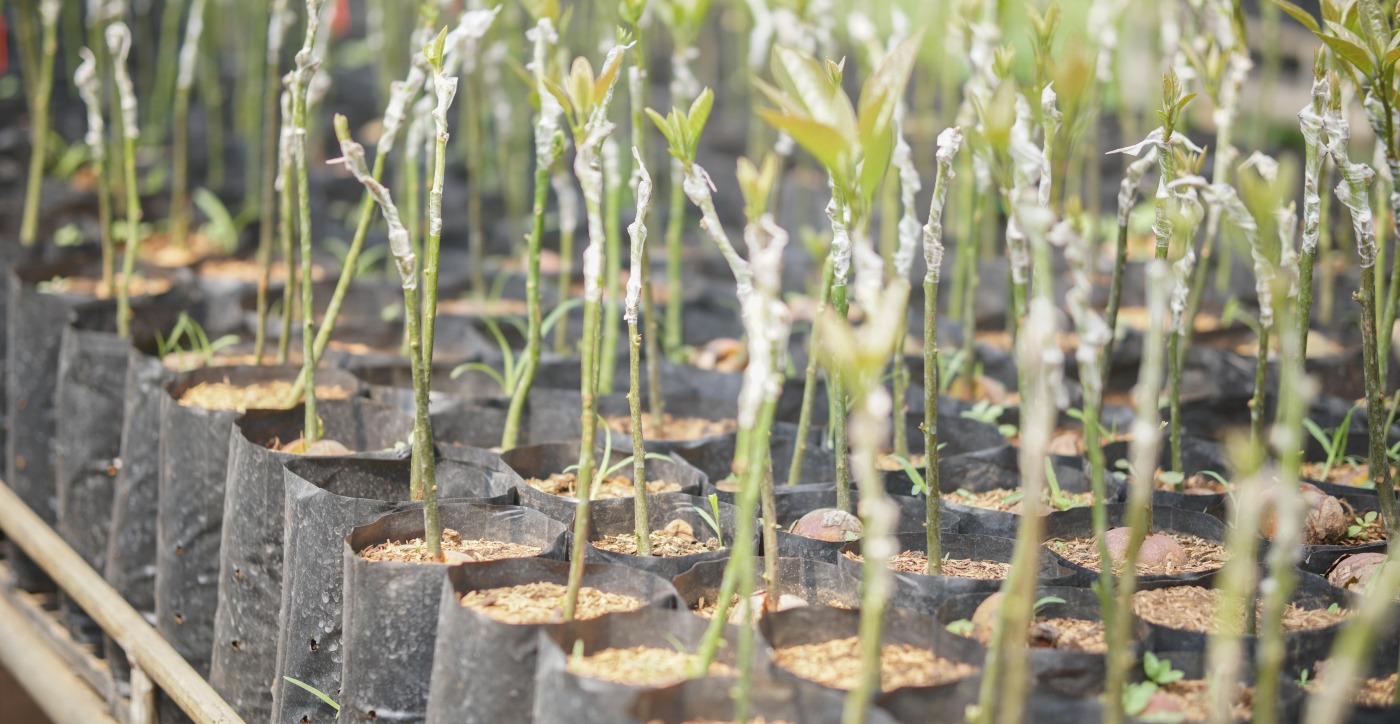
Grafting vegetable plants
We see an evolution among younger gardeners who increasingly want to grow their own vegetables with as high a yield as possible and as little risk of disease as possible.
One of the developments is to make vegetable plants disease-resistant. There are already many different potato varieties such as the Carolus, Texla or Sarpo Mira that are resistant to the potato blight. Another development that has been seriously on the rise in recent years is the sale of grafted vegetable plants. Whereas ten years ago this was still limited to a single variety of tomato plants, you can now buy cucumber, peppers, melons, aubergines and various tomato varieties in grafted form.
WHAT IS A GRAFTED PLANT?
As with, for example, fruit trees, a certain vegetable is grafted onto the rootstock of another plant (which is very vigorous). This is an entirely manual process that does not involve any chemicals.
The aim is to combine the properties of both plants, thereby increasing the yield and disease resistance of the top plant. In principle, all plants of the same family can be grafted onto each other. For example, a few years ago the ""Tomtato"" came on the market: a tomato grafted on a potato plant. Personally, I see no point in combining a tomato plant with a potato. But it is a nice novelty.
WHY GRAFT PLANTS?
Grafting vegetable plants actually has only advantages:
=
Yield: You have a higher yield, and can harvest longer. You can easily count on a double yield of what you are used to (8 trusses/tomato plant of >10meter high)
=
Quality: You get a very strong growing, healthy plant that is resistant to many common diseases and absorbs nutrients from the soil very well. (Chemical) pesticides are therefore often superfluous.
As always, there is one drawback: grafted plants are usually twice as expensive as ordinary sown plants.
HOW DOES THE JAPANESE CUP GRAFTING WORK?
To describe this process in full would take several pages. But the step-by-step plan below gives you all the information you need to get started. We choose to use the example of grafting two tomatoes.
1. Variety choice: Usually a wild tomato is used as rootstock because of its vigour. In professional cultivation, the Maxifort variety is almost exclusively used because of its very good resistance to almost all root diseases and its vigour. Unfortunately, this variety is almost impossible to obtain in small quantities. It does not matter which variety you want fruit from: you can graft any variety onto the rootstock.
2. Sow the two tomato varieties you want to combine in good seed and cutting soil, in trays or small pots.
3. Wait until the seeds have emerged and the plants are growing well.
4. It is best to cut the rootstock at a height of 2.5 to 3 cm and at an angle of 45°. In this way, you get the largest possible contact surface. The ideal diameter of the rootstock is 1.5 to 1.8 mm.
5. Do the same with the trunk. For the trunk, we are of course going to use the upper part.
!!!It is very important that the diameters of the plants to be grafted together are the same!!! In order to be able to graft, it is very likely that both varieties have to be sown at a different time in order to obtain an equal diameter. Because the number of combinations of varieties is so large, this can almost only be determined by trial and error.
6. The stem is now placed on the rootstock with the help of a grafting clip.
7. The freshly grafted plants are placed in a tunnel greenhouse for 5 to 6 days where the temperature (continuous 20°C) and a high air humidity (100%) are monitored.
8. Afterwards, the foil is partly removed for +/-2 days, allowing some ventilation.
9. From the 8th day onwards, the two plants are grafted together, and placed in an ordinary greenhouse for further cultivation
TOO MUCH GROWING POWER
Grafted plants have so much growing power that a second stem is often grown on the same root. My experience is that this is an added value in professional cultivation (more yield) but is not advisable for hobby cultivation. The chance that the stem breaks or bruises when splitting is real once the plant starts to bear fruit. You can avoid this by keeping sufficient planting distance, and especially by supporting the tomatoes and fruit well.
CONCLUSION
Grafted plants are an absolute plus for gardeners. Once you have planted grafted tomatoes or cucumbers, you will not want anything else. Grafting tomato plants yourself is perfectly possible and definitely worth a try. Unfortunately, the yield will not yet be comparable to that of the purchased plants, since the seed of the rootstock used by professional growers is not available in small quantities.
Would you like to know more about the difference between seed-preserved, hybrid and grafted tomatoes?
👉Then be sure to read this article.
More info? Receive all our gardening tips directly in your mailbox!
We'll only email you handy facts, green advice and our best promotions & discounts. You'll receive it about once a week and you can unsubscribe at any time. No spam, promise 🤞











